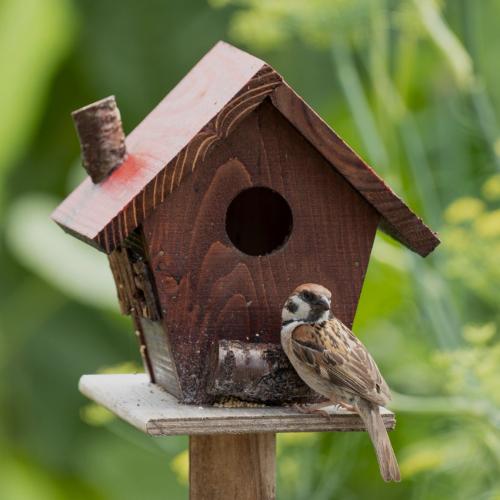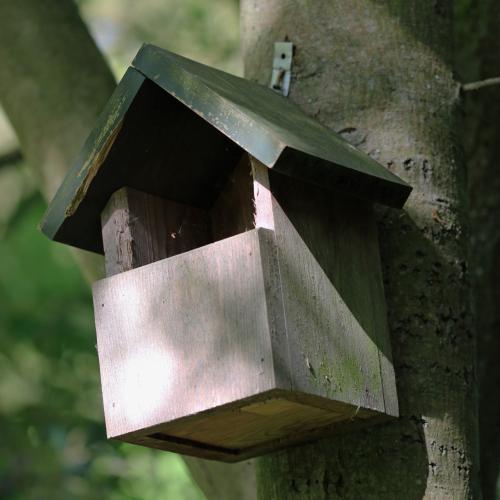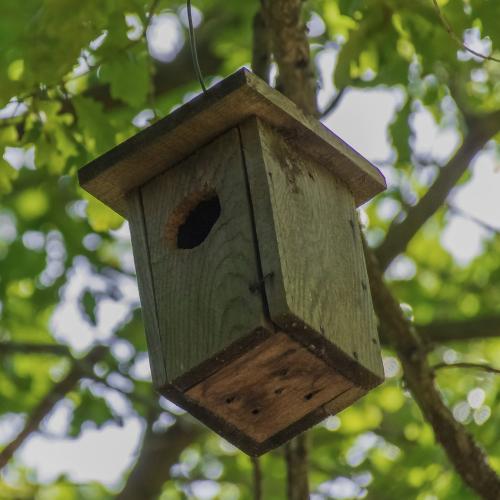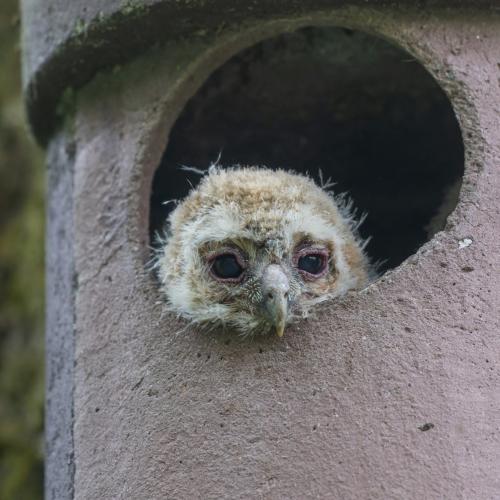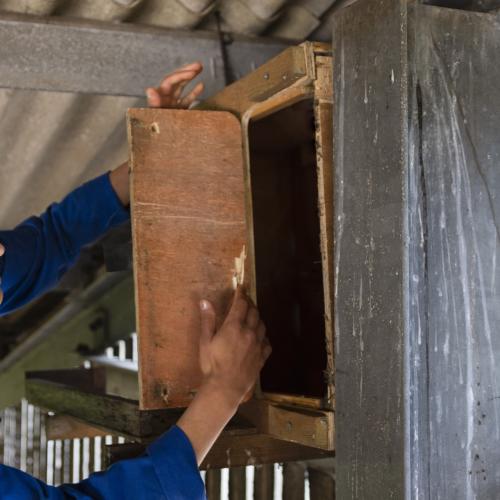Nest Box Guide
Installing nestboxes in our gardens and parklands helps to provide precious homes for our native bird species.
As we make our outdoor spaces neater and tidier and as we construst modern buildings with fewer nooks and crannies, they become less inhabitable for birds. The populations of many bird species are now falling as a result.
The British Trust for Ornithology (BTO) estimates that gardens in Britain make up a total area that's bigger than Suffolk. Now imagine the impact we could have if each of these gardens were to have one or more nestboxes...
Which birds use nestboxes?
In Britain, we have a diverse array of bird species and their nesting needs are just as varied. Learn which types of boxes attract which birds, with our guide below:
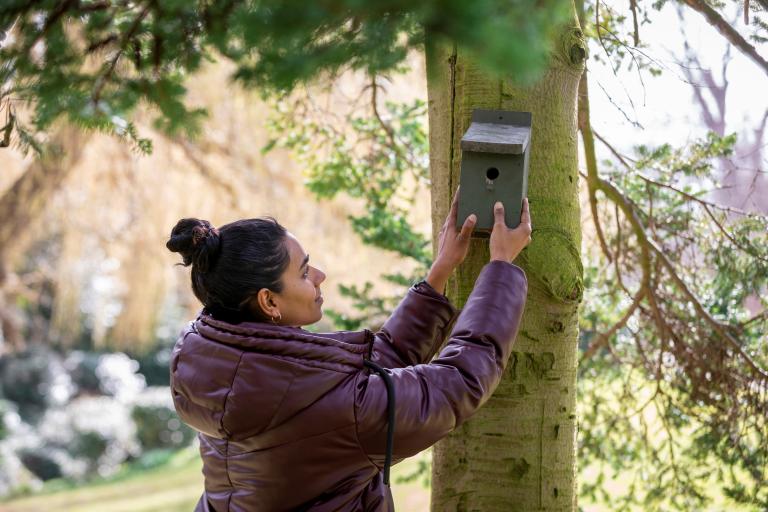
When is the best time to put up a nestbox?
Traditionally, boxes for tits and other small birds are put up in early spring before the new breeding season starts, but some species will already be hunting for nest sites long before this date. Juvenile birds may even begin to select potential sites during their first autumn and winter. Boxes that are in place by the autumn may well be used as roosting havens in extremely cold winter periods, so the best advice is to put up your box as soon as it’s ready.
How many nestboxes lie unused in garden sheds, waiting for that ideal moment? There’s no time like the present – put them up right now!
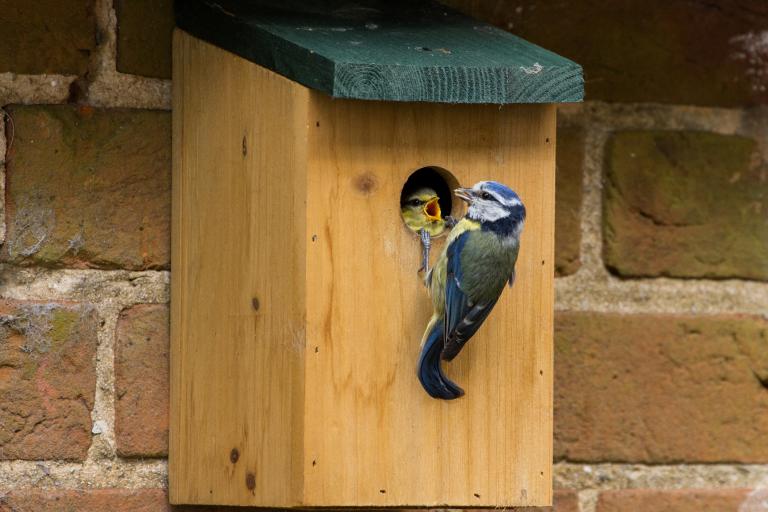
Where is the best place to put your nestbox?
It is important to provide a safe location where chicks can be raised with fewer risks from predators or bad weather, but it’s sensible to put the box in a place where maintenance and cleaning are as easy as possible. If you intend to inspect the nest and its contents periodically, make sure you can do this with minimum disruption to the parent birds.
For many species the height of a box is not too critical, as in the wild they often can't be picky, however, we don’t advise going lower than one metre above ground level. Equally, you might think about putting the box at a height where it’s out of reach of inquisitive children.
If your garden isn’t shaded by surrounding trees or buildings, it’s best to angle the entrance hole in a northerly or easterly direction, as these usually face away from prevailing wind and rain.
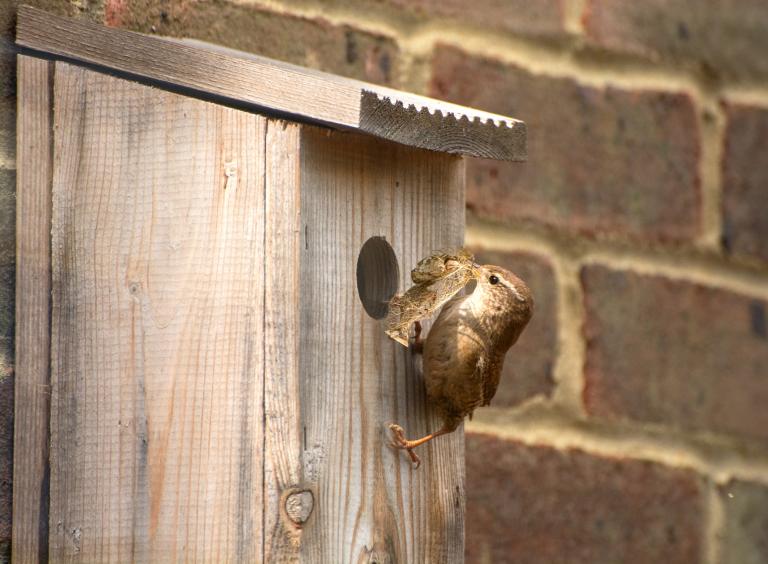
- Nestboxes of the same type shouldn’t be sited too close together, as it can encourage aggressive behaviour between neighbours.
- Angle the front of the nestbox vertically or slightly downwards to prevent rain from entering.
- Attach open-fronted boxes to a wall or fence that has shrubs and creepers growing against it, so it is less exposed.
- Ensure your nestbox is not easily accessible to predators like cats and squirrels.
- Don’t site nestboxes close to bird feeders. High levels of activity by visiting birds could disturb nesting pairs.
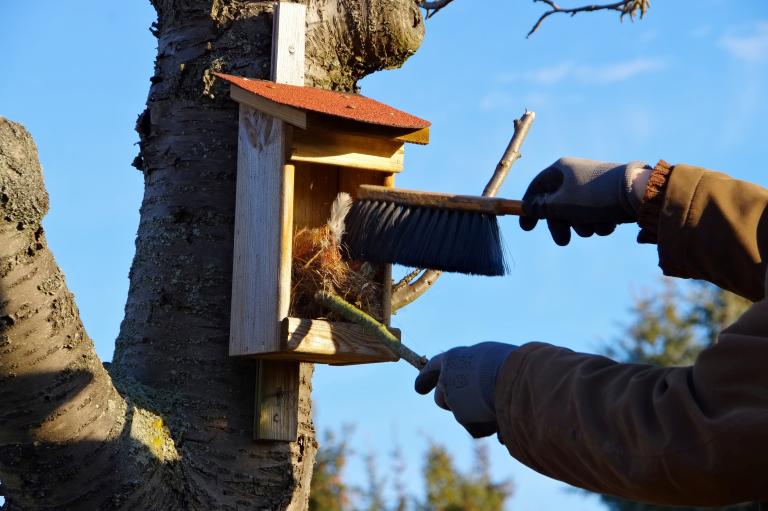
Looking after your nestbox
We recommend some routine maintenance and checking of your nestboxes before a new breeding season gets underway, in order to create the best conditions to attract nesting birds.
Start by removing old nests from boxes and repairing any damaged boxes, or replace them entirely if necessary. This can be done between September and the end of January - It’s a wise idea to wear gloves and a dust mask while you’re doing it. Don’t hang on to any unhatched eggs – simply dispose of them with the nest.
Old nests can be recycled in your compost bin. A stiff bristled brush, such as an old toothbrush, is a useful tool for removing hardened debris from the box corners.
For tits, you can start cleaning operations as soon as breeding is over, but bear in mind that other hole-nesting species like sparrows may have a second or third brood in the same nest. Leave them alone until later in the autumn when it’s certain they are no longer in use. Don’t delay your clean-up for too long, as if the weather turns cold, smaller birds may decide to roost in a nestbox and even build a winter roosting 'nest' for extra warmth.

